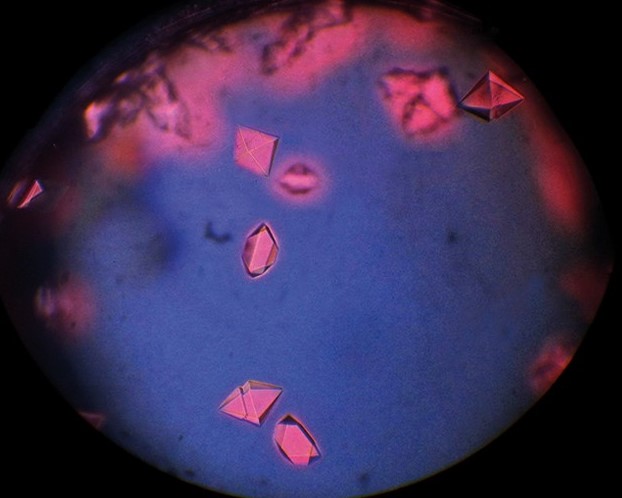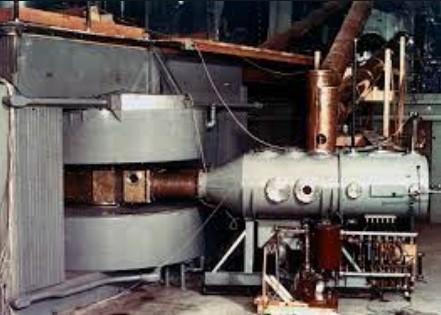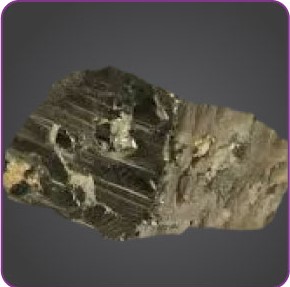Curium, a synthetic element nestled in the heart of the actinide series, stands as a testament to human ingenuity in the realm of nuclear chemistry. Named after the pioneering scientists Marie and Pierre Curie, its existence underscores the intricate dance of particles that occurs at the atomic level. Among its various isotopes, Curium-242 and Curium-244 emerge as subjects of particular interest due to their unique properties and applications in the field of nuclear science.
The primary difference between Curium-242 and Curium-244 lies in their atomic mass and half-life, with Curium-242 having a half-life of 163 days and Curium-244 boasting a longer half-life of 18.1 years. This variance significantly influences their radioactive properties, applications in power generation, and roles in scientific research. Moreover, the methods of their production and the specific safety measures required for handling them also differ, tailoring their utility in various industrial and medical applications.
Delving deeper, Curium-242 and Curium-244 serve as quintessential examples of the complexities within the nuclear science domain. Their contrasting characteristics not only provide a foundation for understanding radioactive decay processes but also pave the way for innovative advancements in areas ranging from space exploration to targeted cancer therapies. The exploration of these isotopes encapsulates the relentless pursuit of knowledge that defines the scientific endeavor, highlighting the delicate balance between harnessing atomic energy and ensuring environmental and human safety.

Curium Overview
Elemental Profile
Curium, symbolized as Cm, is a radioactive, synthetic element that occupies a unique position in the periodic table under the actinide series. It was discovered in 1944 by a group of researchers including Glenn T. Seaborg, Ralph A. James, and Albert Ghiorso. This discovery was part of their work on the Manhattan Project, a testament to human curiosity and scientific endeavor. Named after Marie and Pierre Curie, pioneers in the field of radioactivity, curium honors their significant contributions to science.
Key characteristics of curium include its silvery-white appearance and radioactive nature. While it has no stable isotopes, curium is known for its ability to emit a glowing radiance in the dark due to its intense radioactivity. This element finds applications in various fields, notably in nuclear fuel, medical treatments, and as a power source in space exploration.
Isotopes Significance
Isotopes play a crucial role in nuclear science and its applications, acting as a cornerstone for research, medical, and energy production technologies. An isotope’s atomic mass and radioactivity dictate its utility, from serving as neutron sources in research laboratories to powering remote equipment in space missions. Curium’s isotopes, particularly Curium-242 and Curium-244, are exemplary in showcasing the vast potential of isotopes in advancing science and technology.
Curium-242
Physical Properties
Curium-242 stands out with its half-life of 163 days, showcasing a transient existence that underlines the dynamic nature of radioactive elements. Its atomic mass is 242 u, and it remains solid under normal conditions. This isotope’s relatively short half-life and substantial radioactivity render it a potent source of alpha particles.
Production Methods
Producing Curium-242 involves intricate nuclear reactions within reactors. Here’s a simplified overview of the process:
- Neutron Bombardment: Plutonium-239 is subjected to neutron radiation, leading to the formation of plutonium-240 and subsequently plutonium-241.
- Beta Decay: Plutonium-241 undergoes beta decay to form americium-241.
- Further Neutron Bombardment: Americium-241 is then bombarded with more neutrons, transforming into americium-242m, which, through beta decay, yields Curium-242.
This method highlights the chain of nuclear transformations required to produce Curium-242, emphasizing the sophisticated nature of isotope production.
Uses and Applications
Curium-242’s applications are influenced by its radioactive properties. It is used as a:
- Neutron Source: Its ability to emit neutrons when mixed with beryllium makes it valuable in research and industrial applications.
- Heat Source: In space missions, Curium-242’s decay provides a consistent heat source, crucial for powering spacecraft systems in the absence of sunlight.
- Medical Research: Its radioactivity is utilized in cancer treatment research, focusing on targeted alpha therapy (TAT).
Curium-244
Physical Properties
Comparatively, Curium-244 has a longer half-life of 18.1 years, which allows it to be used over extended periods. Its atomic mass is 244 u, and like Curium-242, it is solid at room temperature. The extended half-life of Curium-244 compared to Curium-242 significantly impacts its storage, handling, and applications, making it more suitable for long-term projects.
Production Methods
The production of Curium-244 involves a slightly different set of nuclear reactions, emphasizing its distinct nature from Curium-242:
- Higher Neutron Flux: The production of Curium-244 requires exposing either plutonium or americium to a higher neutron flux compared to what is needed for Curium-242.
- Series of Nuclear Reactions: This process involves multiple neutron capture and beta decay steps, starting from either plutonium or americium isotopes.
This method not only underscores the complexity of producing different isotopes but also the necessity of having advanced nuclear reactors capable of achieving the required conditions.
Uses and Applications
Curium-244’s unique attributes make it suitable for specific uses not applicable to Curium-242, such as:
- Power Source in Space: Its long half-life makes it ideal for powering radioisotope thermoelectric generators (RTGs) in deep-space missions.
- Radiographic Sources: Utilized in industrial radiography to inspect heavy metal parts and welds for integrity.
- Environmental Studies: Curium-244’s trace analysis helps in studying oceanographic and environmental processes.

Comparative Analysis
Half-Life Differences
The half-life of an isotope profoundly impacts its usage and handling. Curium-242, with a half-life of 163 days, requires more frequent handling and replacement in applications, compared to Curium-244, which has a much longer half-life of 18.1 years. This difference means that Curium-244 can be used in long-term projects, especially in situations where replacing the isotope is difficult or impossible, such as space missions. On the other hand, the shorter half-life of Curium-242 makes it more suitable for applications where intense, but short-lived, radioactivity is needed, such as in certain research and medical treatments.
Radioactivity Levels
When comparing radioactivity levels, both Curium-242 and Curium-244 are highly radioactive, but the type of radiation they emit and their activity levels can dictate specific safety measures. For instance, the alpha radiation from Curium-242 requires less shielding compared to the gamma radiation that might accompany the decay of Curium-244 in certain scenarios. Handling materials and safety protocols need to be tailored to these differences, ensuring protection against radiation exposure.
Application Differences
The distinct properties of Curium-242 and Curium-244 lead to their use in different applications:
- Curium-242 is prized in short-term applications where its potent alpha radiation and relatively rapid decay are beneficial, such as in portable neutron sources or medical research for cancer treatment.
- Curium-244, with its longer half-life and sustained radioactivity, finds use in long-term power sources for space missions and in industrial radiography, where prolonged exposure to radiation is required.
These differences highlight the importance of choosing the right isotope for specific scientific, medical, or industrial needs.
Safety and Handling
Radiation Safety
Handling radioactive materials like Curium-242 and Curium-244 requires strict safety measures to protect workers and the environment. Basic precautions include:
- Shielding: Use of lead or concrete barriers to minimize radiation exposure.
- Distance: Maintaining a safe distance from the radioactive source to reduce dose exposure.
- Time: Limiting the time spent near the radioactive source to decrease the risk of exposure.
- Personal Protective Equipment (PPE): Wearing appropriate PPE, such as gloves and eye protection, to avoid contamination.
Disposal Methods
The disposal of Curium isotopes must consider their half-life and radioactivity:
- Curium-242, due to its shorter half-life, may require secure storage until it decays to levels safe for disposal.
- Curium-244, with its extended half-life, often necessitates long-term containment strategies, such as deep geological storage, to ensure it does not pose a risk to the environment or public health.
Proper disposal methods are critical to mitigate the long-term environmental impacts of these substances.
Future Perspectives
Research Directions
The future of Curium isotope research holds promising advancements in various fields. Potential areas of exploration include:
- Enhanced Cancer Treatments: Leveraging the alpha radiation from Curium isotopes for more effective and targeted cancer therapies.
- Energy Production: Developing new ways to use Curium, particularly Curium-244, in nuclear batteries for longer-lasting power sources.
- Space Exploration: Utilizing Curium-244 in more sophisticated radioisotope thermoelectric generators (RTGs) to power deep-space missions, enhancing reliability and mission duration.
Technological Advancements
Technological progress will undoubtedly expand the uses of Curium isotopes. Innovations may include:
- Improved Safety Mechanisms: Advanced materials and technologies to handle and shield against the radioactivity of Curium isotopes safely.
- Enhanced Isotope Production: More efficient methods to produce Curium isotopes, reducing costs and making them more accessible for research and industrial applications.
- New Applications: The discovery of novel applications for Curium isotopes, potentially in nanotechnology, environmental monitoring, or in creating more efficient medical diagnostic tools.
Frequently Asked Questions
What is Curium?
Curium is a synthetic, radioactive element that belongs to the actinide series in the periodic table. It was discovered in 1944 by scientists Albert Ghiorso, Glenn T. Seaborg, and their team during their research on the Manhattan Project. Named after Marie and Pierre Curie, it has no stable isotopes and is known for its uses in research, medicine, and power generation.
How are Curium-242 and Curium-244 Produced?
Curium-242 and Curium-244 are produced in nuclear reactors through the neutron bombardment of plutonium or americium isotopes. Curium-242 is typically generated by bombarding plutonium-239 with neutrons, leading to a series of beta decays. In contrast, Curium-244 can be produced from either plutonium or americium targets, requiring a higher neutron flux and resulting in a more complex production process.
Why are Curium Isotopes Important?
Curium isotopes, especially Curium-242 and Curium-244, are pivotal in various scientific and industrial applications due to their unique radioactive properties. They play crucial roles in research, serving as neutron sources and in the study of nuclear reactions. In medicine, they are used in certain types of cancer treatment. Additionally, Curium-244’s long half-life makes it an ideal candidate for use in space exploration as a power source in radioisotope thermoelectric generators.
How are Curium Isotopes Handled Safely?
Handling curium isotopes requires stringent safety protocols due to their high radioactivity. This includes using remote handling tools, shielding to protect against radiation, and containment measures to prevent environmental contamination. Personnel must wear protective clothing, and facilities must be equipped with ventilation systems to filter out any airborne radioactive particles, ensuring both worker and environmental safety.
Conclusion
The distinction between Curium-242 and Curium-244 encapsulates the essence of nuclear chemistry’s power and precision. Through understanding the nuances of these isotopes, scientists and engineers can harness their potential in a multitude of applications, from deep-space exploration to groundbreaking medical treatments. The careful management of their radioactive properties underscores the importance of safety and innovation in advancing the frontiers of science and technology.
Reflecting on the broader implications, the study of Curium-242 and Curium-244 exemplifies humanity’s quest to unlock the secrets of the universe. As we continue to explore the atomic landscape, these isotopes serve as beacons, guiding our journey through the complex interplay of particles and forces that compose the fabric of our reality. Their story is not just one of scientific curiosity, but a testament to the enduring human spirit to explore, understand, and innovate for a better tomorrow.

